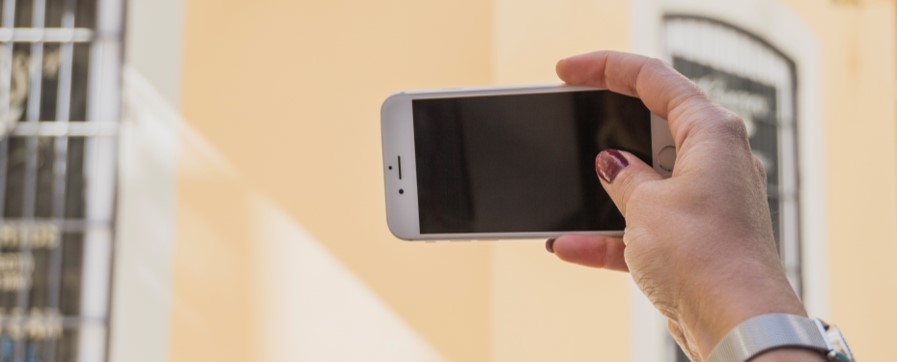Taking Photographs While Serving
A How to Serve Article from PST

The role of the process server has expanded over the past decade. Gone are the days of receiving the document to serve and simply arriving at the address and serving the process. In different types of cases that you serve, clients may now request taking photos of each attempt, often including GPS tagging of the location.
Why Photograph?
Unfortunately, in the past, some process servers began falsifying attempts in collection and other cases, often called “sewer service”, resulting in individual defendants finding out about the default on the case when their bank account was frozen after judgment. This fraudulent practice was uncovered and today law firms in these types of cases now require GPS tagging of the service, to prove proper service. In conjunction with this requirement, many firms now ask for photos to be taken as well, especially for collection and foreclosure papers. Many clients have decided to follow this practice and ask for photos on all services.
Beyond client requirements, these photos can become extremely useful if a defendant challenges service several years after you served them, and the photos may help refresh your memory of the serve if you are called to testify in court.
Types of Photos
Client requests for photographs can vary by case. These can include:
- Photo documentation of the home/business on at least one of the attempts at each address attempted
- Photo of the home/business on every attempt, including the successful service
- If the document is posted on the door, a photo of the posting
- Photo of any vehicles in the driveway showing the license tag
- If a drop serve is performed but the person served leaves the papers and the vicinity
Complying with Privacy Laws for Photos and Videos
While your clients may ask for photos or recordings of the service, you need to know the laws in your state and whether any prohibit recording or taking photographs at the residence. Further, if you decide to record your serves, using a bodycam or your phone, other laws will come into play. The National Association of Professional Process Servers (www.napps.org) points out many of the potential legal issues with photographing or videoing individuals, because there is no uniform privacy law throughout the country. Laws have been passed at the local, state and federal levels, resulting in a confusing array of laws that may apply to your service area, including laws that can prohibit:
- Photography of individuals anywhere they have a reasonable expectation of privacy.
- Photography individuals without their consent in other places, including at a doctor’s office, in their car, or at work.
- Recording conversations without the consent of all parties involved
- Recording anything using hidden cameras in locations such as state property, restrooms, and school grounds
Many client requests may be very general and intended to cover all states, so it is your responsibility to comply with the law and inform a client when a photo or recording is not allowed.
Obtaining the Photographs
Many servers utilize a mobile app with their software program, such as PST’s mobile app, which has the ability for you to take photographs and allow you to automatically add such features as GPS tag, date, time, and address. If you do not utilize a mobile app with those capabilities, you can use your cell phone camera and add geo-tagging or use other third party software.
When taking photographs, it’s important to exercise good judgment. Be discreet! Think about how you would react if you found someone standing in your driveway taking photos of your house and car. Your goal is to assist your client with additional verification of your attempt not seek the National Geographic Photographer of the Year Award. Here are a few tips:
- Take a photo as you pull up to the residence. You are less likely to be noticed taking a photo from your vehicle prior to approaching the door.
- If someone is outside, you may want to avoid taking the photo at that moment but instead complete your serve and leave. Go down the block, finish your paperwork and snap your photo as you drive back by when the person served may have gone back into their residence.
- When taking photos of vehicles in the drive it’s helpful to have your camera ready as you get out of the car and snap photos as you walk up the driveway.
- When taking photos of a posting, take a few photos showing the document posted to the door. If the house or apartment number is close to the door, be sure to include it in the photo.
- When taking a photo at a business, it’s best to make sure there are no people in the photo. Oftentimes, it’s best to take the photo from your vehicle. For a high traffic location, try to angle your shot a bit higher to show the building without any individuals in the background.
- Due to privacy concerns, it is a good practice to avoid taking photographs of individuals, photographs that show the inside of the residence, even in the background.
Finally, do NOT attempt to take a photo in a confrontational situation. Your safety is paramount to obtaining a photo!
Wrapping it Up
It is important to ensure that you are complying with any privacy laws in your state and exercise discretion in your effort to assist your client with these extra requests during your service. Following the laws regarding service, protecting the privacy of those you may serve, and ensuring your safety should be your top priority. The key is to discreetly obtain the photos requested by your client without getting into a potential altercation if you are observed by residents or neighbors.